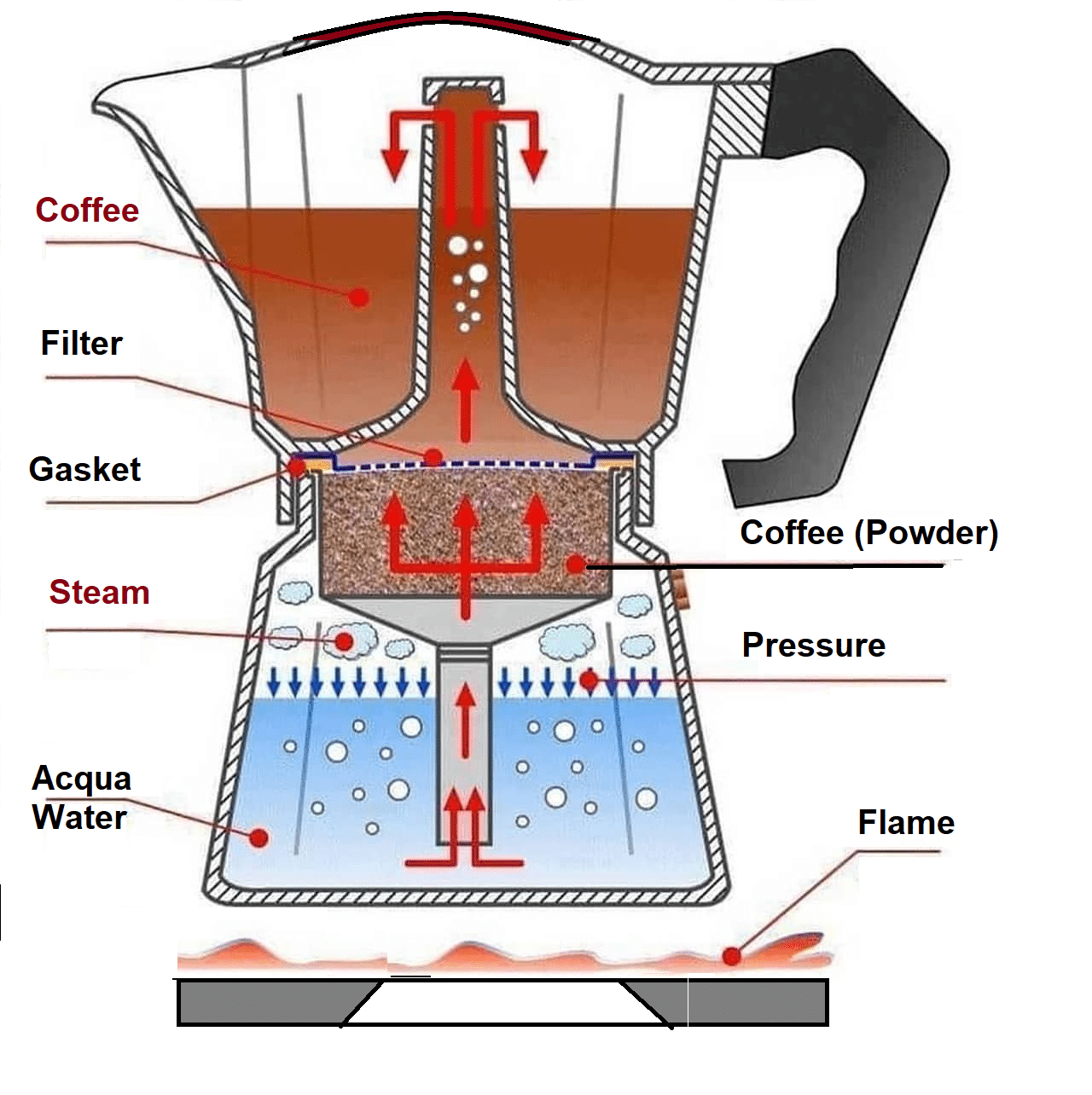In kitchen appliances, the pressure cooker and Instant Pot have become staples for home cooks seeking efficiency and convenience. While both promise to accelerate the cooking process, understanding the differences between a pressure cooker vs Instant Pot can elevate your culinary experience.
In this article, we’ll break down the differences, guiding you through the world of these time-saving kitchen companions.
Table of contents
- Are all Instant Pots pressure cookers?
- What’s the Difference Between a Pressure Cooker vs an Instant Pot?
- Which one is better for beginners in the kitchen – a pressure cooker vs an Instant Pot?
- Pros and Cons of a Pressure Cooker
- Pros and Cons of an Instant Pot
- Are these cookers safe to Use
- Conclusion
- Frequently Asked Questions
- References
- Recommendations
Are all Instant Pots pressure cookers?
Yes, all Instant Pots are essentially electric pressure cookers. The term “Instant Pot” refers to a brand of multi-functional electric pressure cookers. Instant Pots are equipped with a built-in electric heating element and a sealed cooking chamber, allowing them to function as efficient pressure cookers.
What sets Instant Pots apart is their versatility. In addition to pressure cooking, they come with various preset functions and cooking modes, such as sautéing, steaming, slow cooking, rice cooking, and more. This multifunctionality makes Instant Pots a popular choice for home cooks looking for a single appliance that can perform a range of cooking tasks.
So, while all Instant Pots have pressure cooking capabilities, they go beyond the traditional pressure cooker by offering additional cooking options in a single, convenient device.
Check out: How Selling a House Works | What to Know Before Selling
What’s the Difference Between a Pressure Cooker vs an Instant Pot?
The major differences between a pressure cooker and an Instant Pot lie in their design, functionality, and ease of use. Here are the key distinctions:
Design and Construction:
Pressure Cooker: A traditional pressure cooker is a stovetop appliance with a sealed cooking pot and a pressure release valve. It relies on a stovetop burner for heat.
Instant Pot: An Instant Pot is an electric appliance with a built-in heating element. It has a sealed cooking chamber and an electric control panel, eliminating the need for a stovetop.
Cooking Methods:
Pressure Cooker: Primarily designed for high-pressure cooking, a traditional pressure cooker is focused on quickly cooking food using steam pressure.
Instant Pot: An Instant Pot is a multi-functional electric pressure cooker that combines pressure cooking with various other cooking methods, including sautéing, slow cooking, steaming, and more. It serves as an all-in-one cooking appliance.
Read also: How Smart Windows Work in Homes
Control and Presets:
Pressure Cooker: Traditional pressure cookers may have manual controls for pressure and heat but typically lack preset cooking functions.
Instant Pot: Instant Pots come with a user-friendly control panel featuring preset cooking functions. These presets are designed to simplify the cooking process for various dishes, making them more accessible to users.
Versatility:
Pressure Cooker: Limited to pressure cooking and, in some cases, additional stove-based functions like boiling or simmering.
Instant Pot: Known for its versatility, an Instant Pot can replace multiple kitchen appliances. Beyond pressure cooking, it can be used for sautéing, slow cooking, making yogurt, and more.
Ease of Use:
Pressure Cooker: Requires manual control of heat and pressure, which may involve a learning curve.
Instant Pot: Designed for user-friendly operation with preset functions, timers, and an automatic pressure release feature, making it more approachable for beginners.
Portability:
Pressure Cooker: Typically less portable due to its stovetop design, requiring a compatible heating source.
Instant Pot: Electric and self-contained, making it more portable and suitable for use in various locations with access to electrical outlets.
Check out: How to Repair Small Appliances: Full Tips and Guidelines
Which one is better for beginners in the kitchen – a pressure cooker vs an Instant Pot?
For beginners in the kitchen, an Instant Pot is often considered more user-friendly compared to a traditional pressure cooker. Here’s why:
- Preset Functions: Instant Pots come with a user-friendly control panel featuring preset cooking functions for various dishes such as soups, stews, rice, and more. These presets simplify the cooking process, making it easier for beginners to follow recipes without the need for precise manual adjustments.
- Automatic Pressure Release: Instant Pots typically have an automatic pressure release feature, reducing the risk of user error during the pressure cooking process. This safety feature makes the cooking experience more approachable for beginners who may be unfamiliar with pressure cooking.
- Versatility: Instant Pots are designed to be multifunctional, offering not only pressure cooking but also sautéing, slow cooking, steaming, and more. This versatility means that beginners can explore a variety of cooking techniques with a single appliance.
- Electric Design: Unlike traditional pressure cookers that require a stovetop burner, Instant Pots are electric appliances with built-in heating elements. This eliminates the need for coordinating heat levels on a stovetop, simplifying the cooking process for beginners.
- User-Friendly Interface: The control panel on an Instant Pot is designed to be intuitive, providing clear buttons for different cooking functions. This ease of use is especially helpful for those who are new to pressure cooking and kitchen appliances.
- Consistent Results: Instant Pots are known for providing consistent and reliable results due to their preset functions and automatic features. This can be reassuring for beginners who may be concerned about achieving the right cooking outcomes.
While traditional pressure cookers can also be suitable for beginners, the learning curve may be steeper due to the manual control of pressure and heat.
Read also: Painter’s Tape vs. Masking Tape: What’s the Difference?
Pros and Cons of a Pressure Cooker
Pros of a Pressure Cooker:
- Fast Cooking Times: Pressure cookers significantly reduce cooking times compared to conventional methods, making them ideal for busy individuals who want quick and efficient meals.
- Energy Efficiency: The sealed design of pressure cookers retains heat and moisture, requiring less energy to cook food. This can contribute to energy savings over time.
- Preservation of Nutrients: The shorter cooking times in a pressure cooker help retain more nutrients in food compared to longer cooking methods that may lead to nutrient loss.
- Tenderizes Tough Cuts: Pressure cooking is excellent for tenderizing tough cuts of meat, making them more flavorful and enjoyable.
- Versatility: Pressure cookers can be used for a variety of cooking methods, including steaming, boiling, braising, and more.
- Reduction in Kitchen Heat: The closed system of a pressure cooker minimizes heat and steam release into the kitchen, especially useful in hot weather.
Check out: Ultimate Guide to Low-flow Toilets
Cons of a Pressure Cooker:
- Learning Curve: Operating a pressure cooker might have a learning curve, especially for those unfamiliar with the appliance. Understanding pressure levels, release methods, and cooking times is crucial.
- Lack of Visibility: Once the lid is sealed, you can’t visually inspect the food during cooking. This requires a certain level of trust in the process.
- Limited Browning and Caramelization: Pressure cookers don’t provide the same level of browning or caramelization as traditional cooking methods, affecting the appearance and flavor of some dishes.
- Size and Bulk: Pressure cookers can be bulky and take up significant counter or storage space, depending on their size.
- Pressure Release Caution: Releasing pressure from the cooker requires caution to prevent burns. There are different methods for pressure release, including natural release and quick release.
- Certain Ingredients Require Care: Delicate ingredients like fish or quick-cooking vegetables may not fare well in a pressure cooker due to their short cooking times and sensitivity to high pressure.
Pros and Cons of an Instant Pot
Pros of an Instant Pot:
- Versatility: Instant Pots are multi-functional appliances, combining several kitchen devices into one. They can function as a pressure cooker, slow cooker, rice cooker, steamer, sauté pan, and even a yogurt maker.
- Ease of Use: Instant Pots come with preset cooking functions and a user-friendly control panel, making them accessible to beginners. The presets simplify the cooking process for various dishes.
- Time Efficiency: Similar to traditional pressure cookers, Instant Pots reduce cooking times significantly, allowing for quick and efficient meal preparation.
- Energy Efficiency: The electric design of Instant Pots contributes to energy efficiency, as they use less energy compared to multiple separate appliances.
- Safety Features: Instant Pots are equipped with safety features, including automatic pressure release and lid-locking mechanisms, making them safer to use compared to stovetop pressure cookers.
- Consistent Results: The preset functions and automatic features in Instant Pots contribute to consistent cooking results, even for those who are less experienced in the kitchen.
See also: Top 24 inspirational sports movies of all Time
Cons of an Instant Pot:
- Learning Curve: While designed for ease of use, the multitude of functions and features may still present a learning curve for some users, especially those new to cooking.
- Bulky Design: Instant Pots can be bulky and take up significant counter or storage space, especially larger models with more features.
- Limited Browning: The sauté function in an Instant Pot allows for browning, but it may not achieve the same level of caramelization as traditional cooking methods.
- Not Ideal for All Foods: Delicate ingredients that require precise control over cooking times may not fare as well in an Instant Pot. Some dishes may still benefit from traditional cooking methods.
- Price: Instant Pots, especially models with more features, can be relatively expensive compared to standalone appliances like a basic pressure cooker.
- Electric Dependency: Instant Pots require an electrical outlet for operation, which may limit their use in certain situations, such as camping or during power outages.
Are these cookers safe to Use
Both traditional pressure cookers and Instant Pots are generally safe to use when used according to the manufacturer’s instructions. However, it’s important to follow proper safety guidelines to ensure a risk-free cooking experience. Here are some safety considerations for both types of cookers:
Pressure Release:
Always follow the recommended pressure release methods. For traditional pressure cookers, this may involve using the natural release or quick release method. Instant Pots often have automatic pressure release features, but users should still be aware of how to release pressure manually.
Lid Safety:
Ensure that the cooker’s lid is properly sealed before pressurizing. Most modern pressure cookers, including Instant Pots, have safety mechanisms that prevent the lid from being opened when there is pressure inside.
Overfilling:
Avoid overfilling the cooker to prevent clogging the pressure release valve. Follow the recommended maximum fill levels provided by the manufacturer.
Check Seals and Gaskets:
Regularly check the seals, gaskets, and other components for wear and tear. Replace any damaged or worn parts to maintain a proper seal during cooking.
Electric Safety (for Instant Pots):
Ensure that the Instant Pot is used with a functioning power source and follow the manufacturer’s guidelines for electrical safety. Do not attempt to repair or modify the appliance yourself.
See also: How Selling a House Works | What to Know Before Selling
Conclusion
The choice between a pressure cooker and an Instant Pot hinges on your cooking preferences and lifestyle. While a pressure cooker excels in simplicity and efficiency, an Instant Pot takes versatility to the next level, offering an array of cooking methods in one appliance.
Check out: How Smart Windows Work in Homes
Frequently Asked Questions
The primary difference lies in the functions and features. A pressure cooker is a standalone appliance designed for high-pressure cooking, while an Instant Pot is a multi-functional electric pressure cooker that combines various cooking methods, such as sautéing, steaming, and slow cooking, in a single device.
Yes, an Instant Pot can function as a regular pressure cooker. It excels in pressure cooking but also offers additional features for sautéing, slow cooking, and more. The versatility makes it a popular choice for those who want a single appliance with various cooking options.
Generally, cooking times are similar between a traditional pressure cooker and an Instant Pot. However, the electric nature of the Instant Pot may result in slightly longer heat-up and release times.
References
- home.howstuffworks.com- pressure cooker vs instant pot
- afoodloverskitchen.com– pressure cooker vs instant pot which is better
- techradar.com– pressure cooker vs instant pot
- diys.com– pressure cooker vs instant pot





